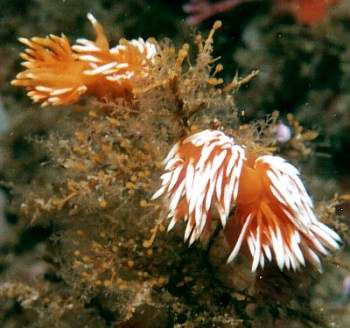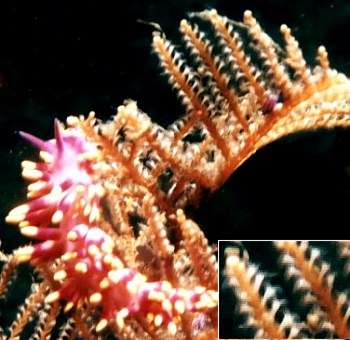Marine plants?
April 30, 2000
From: Valda Fraser


Dear Bill
I would like to know more about what nudibranchs eat and so I need to learn to identify different food sources. Do you know of useful publications?
I have included photos of two different plants which are important in the diet of certain nudibranchs which occur on the south ooast of KwaZulu-Natal. I hope you will be able to identify the plant types and be able to tell me if they occur widely or not.
Thanks,
Valda Fraser
iti04937@mweb.co.za
Fraser, V., 2000 (Apr 30) Marine plants?. [Message in] Sea Slug Forum. Australian Museum, Sydney. Available from http://www.seaslugforum.net/find/2329Dear Valda,
Good question. One way to get an idea of what things feed on is to use the SEARCH button in the blue bar at the top and bottom of each page. Type in words such as food or feeding and see what you come up with. I am gradually adding pages which will give you a better idea of who feeds on what.
Now to your present question. They certainly look like plants but they are hydroids, which are colonies of animals (called polyps) which look just like little sea-anemones. I have prepared a Hydroid Page to give you some background information on them. They are the favourite food of many aeolids and some dendronotoideans.
In your upper photo, the orange balls are specialised sacs called gonotheca in which the jellyfish-like medusa generation of their lifecycle is produced. In the lower photo you can see the rows of polyps arranged in rows along each branch.
Best wishes,
Bill Rudman.
